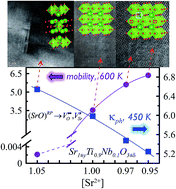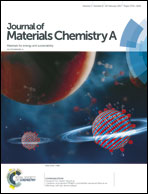Designing strontium titanate-based thermoelectrics: insight into defect chemistry mechanisms
Abstract
Driven by a need to develop low-cost and thermally stable materials for thermoelectric applications, donor-substituted strontium titanate is considered as a promising alternative to traditional thermoelectrics. The complex defect chemistry of SrTiO3-based materials imposes various limitations on identifying the relevant effects exerted on the electronic band structure and heat transfer, being a subject of debate and intensive research. Based on combined XRD, SEM/EDS, HRTEM, XPS, and TGA studies and measurements of thermoelectric properties, this work uncovers the particular role of various structural defects in electrical and thermal transport in Sr1±yTi0.9Nb0.1O3±δ, selected as a model system. Introduction of A-site cation vacancies provides a synergistic effect of combining fast charge transport in the perovskite lattice and suppressing the thermal conductivity mostly due to simultaneous generation of oxygen vacancies. The presence of oxygen vacancies promotes more efficient phonon scattering compared to Ruddlesden–Popper-type layers. These findings provide a link between structural and thermoelectric properties, offering further prospects for seeking highly performing SrTiO3-based thermoelectrics by tailoring the defect chemistry mechanisms.



 Please wait while we load your content...
Please wait while we load your content...